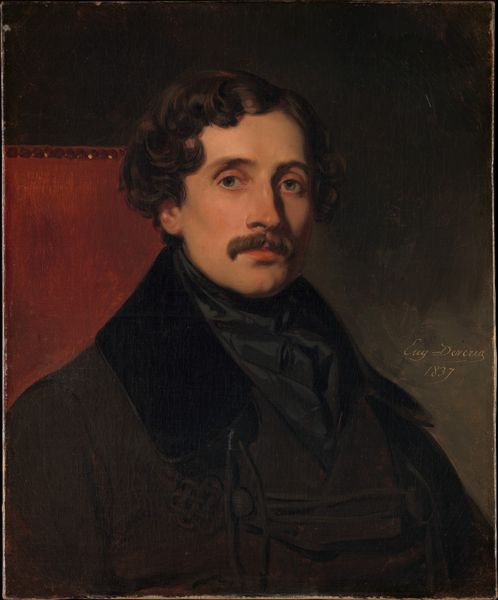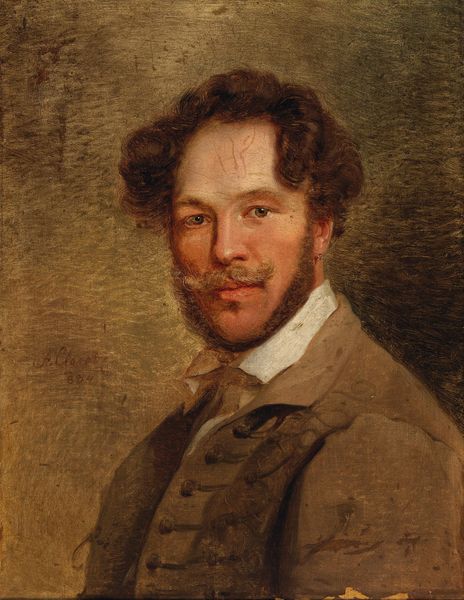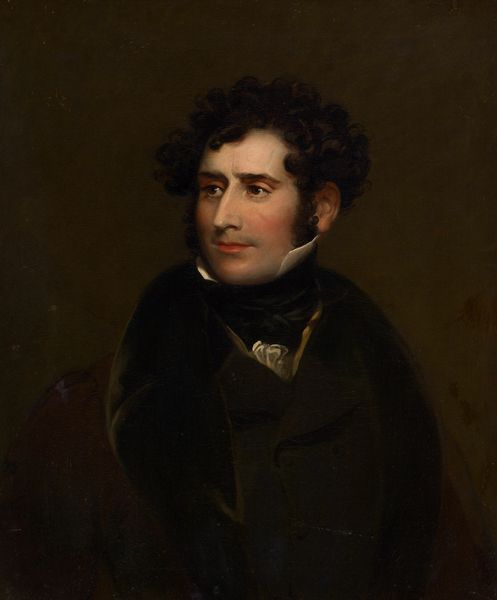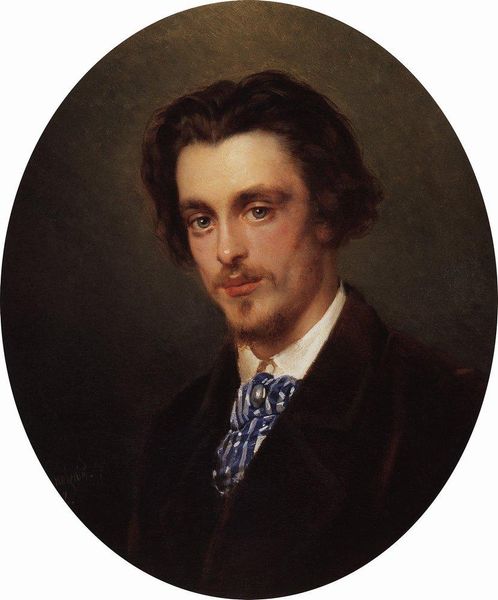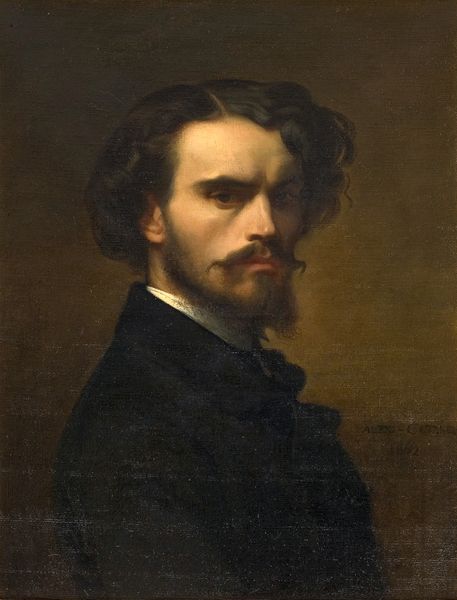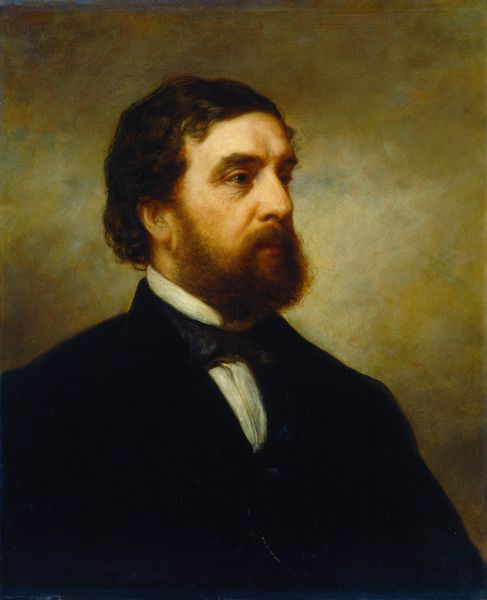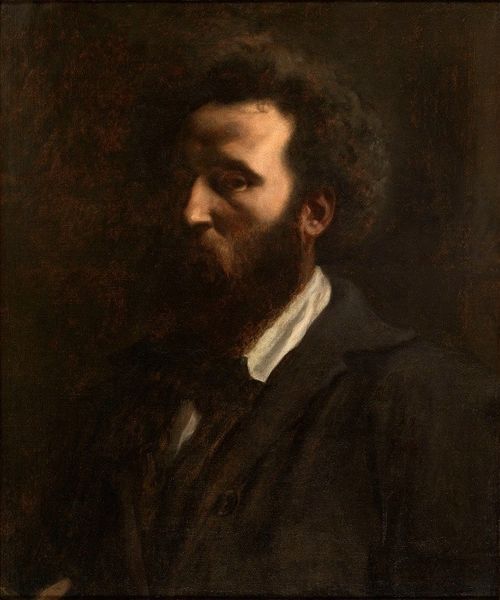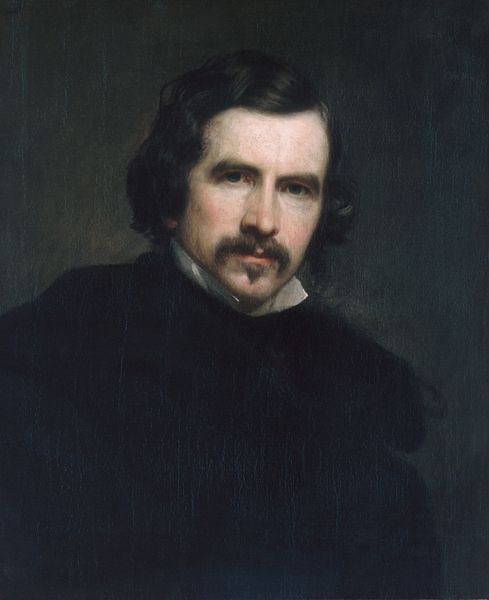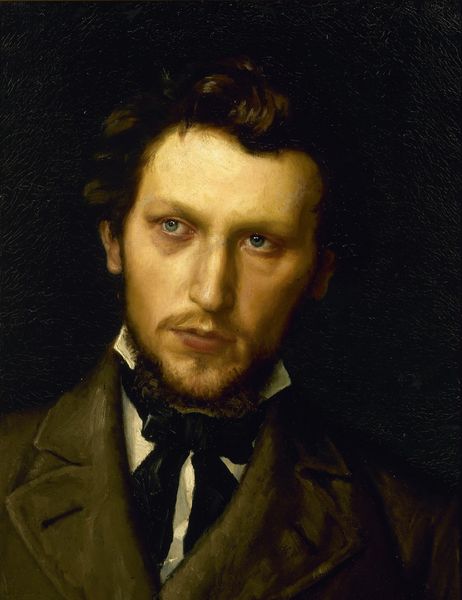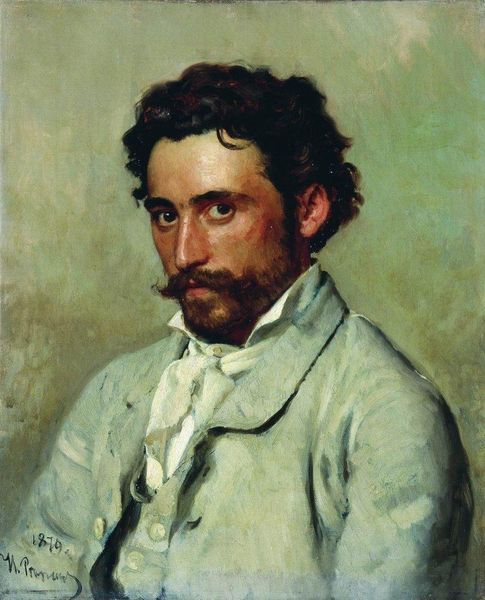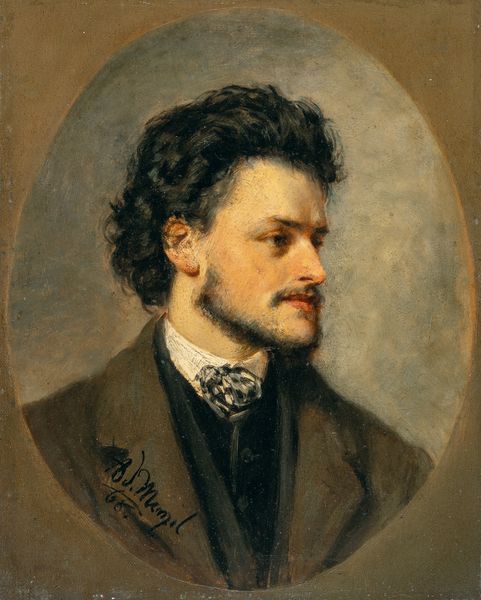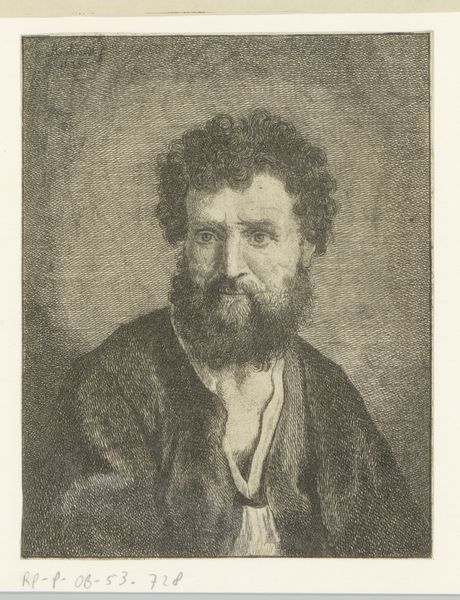
Dimensions: 24 x 20 in. (61 x 50.8 cm)
Copyright: Public Domain
Editor: This is Charles Loring Elliott's portrait of Mathew B. Brady, completed in 1857, using oil paint. There’s something very direct about his gaze that's immediately engaging. What compositional elements stand out to you? Curator: The composition is clearly structured by a central, vertical axis anchored by the figure's face and descending through his sternum. Note the restricted tonal range; browns, creams, and blacks which create a contemplative mood, don’t you think? Also observe how the loose brushwork gives way to controlled precision in the treatment of the face, directing our focus. Editor: Yes, the contrast between the face and the almost smudged background is quite striking. It creates a sort of... spotlight effect, right? Can we really separate this from the reality that it's a portrait *of* a portrait photographer? Curator: Intriguing idea. Let us consider the surface: the textured application of the impasto against the thin translucent washes. Doesn’t the physicality of the paint assert its own presence beyond mere representation? The question of *who* is depicted—another artist, no less—becomes a secondary element compared to the pure manipulation of artistic media here, no? Editor: I see what you mean! The *how* maybe outweighs the *who*. I was focused on the subject, but it’s the technique itself that speaks volumes. Curator: Indeed. Elliott seems more concerned with an investigation of the medium and surface itself rather than a true likeness. Think of this less as a document of identity, and more as an opportunity to explore painterly possibilities. Editor: That’s a completely different way to approach it! Thanks, I’ve definitely got a fresh perspective on this portrait now. Curator: My pleasure! It’s a work that rewards close inspection, and an understanding of formal devices.
Comments
No comments
Be the first to comment and join the conversation on the ultimate creative platform.
